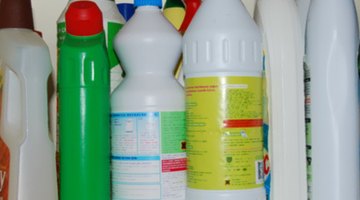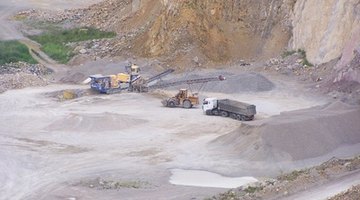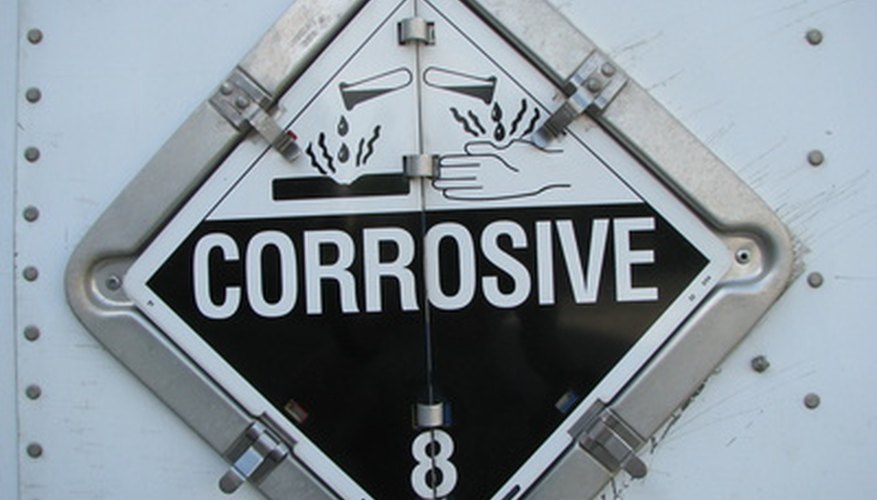Alkaline chemicals and bases are the same thing. They are the opposites of acids, and have a pH greater than 7. Water is a neutral compound with a pH around 7. Alkaline chemicals taste bitter and feel slippery, but be careful: strong bases cause damage such as burns, and OSHA labels them as corrosives. OSHA defines corrosives (in 29 CFR 1910.1200 App A) as a "chemical that causes visible destruction of, or irreversible alterations in, living tissue by chemical action at the site of contact." However, weak bases constitute a main ingredient in soaps.
Sodium Hydroxide

Common names for sodium hydroxide include caustic soda, lye and soda lye. It is a white odourless solid at room temperature. It absorbs moisture from the air. It dissolves easily in water and acid, and is exothermic (the reaction gives off heat). Stores sell sodium hydroxide dissolved in water with a concentration of less than 50 per cent.
- Common names for sodium hydroxide include caustic soda, lye and soda lye.
- It dissolves easily in water and acid, and is exothermic (the reaction gives off heat).
Calcium Carbonate

Another name for calcium carbonate is limestone. This alkaline chemical accounts for about 4 per cent of the earth's crust. Farmers use it adjust soil pH. People take it as calcium carbonate pills to add calcium to their diets. Children draw on the sidewalk with it as chalk. It is also found in building products, paints and plastics.
- Another name for calcium carbonate is limestone.
- Farmers use it adjust soil pH.
- People take it as calcium carbonate pills to add calcium to their diets.
Calcium Hydroxide

Mix lime and water to get calcium hydroxide or cement. Other names for it include lime water or slacked lime. Stone masons use it as mortar between bricks to hold them in place.
Ammonium Hydroxide

Mixing ammonia gas and water forms the caustic, high pH alkaline chemical ammonium hydroxide. Cleaning supplies and floor strippers include this as an ingredient. Household ammonia is a diluted form of ammonium hydroxide. Characteristics include a colourless liquid with a strong odour. Ammonium hydroxide can cause chemical burns, but it can also release ammonia gas into the air.
- Mixing ammonia gas and water forms the caustic, high pH alkaline chemical ammonium hydroxide.
- Ammonium hydroxide can cause chemical burns, but it can also release ammonia gas into the air.
